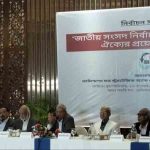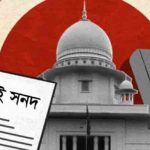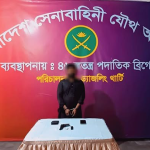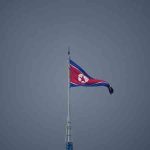A Deep Dive Into Chittagong Hill Tracts, Peace Accord, Achievements and Expectations

Maj Gen Dr. Md. NAYEEM ASHFAQUE CHOWDHURY (Retd)
The Chittagong Hill Tracts have been home to several ethnic groups and subgroups since ancient times. Known as Corpus Mahal during the Mughal period (1666–1760), it was renamed the Chittagong Hill Tracts during the British period. As the region is hilly and forested, various tribes came and settled for two reasons. First, people from Tripura, Mizoram, Assam, Arakan, etc., who are used to living in inaccessible hills due to their low and good terrain suitable for movement, started living here. Second, people moved to the Chittagong Hill Tracts because the Arakan State was unstable and at war. In 1784, King Badpaya of Burma (Central Burma) attacked and captured the Arakan kingdom. As a result, many refugees, particularly Khumis, Chakmas, and Marmas, took refuge in the Chittagong Hill Tracts. During British rule (since 1860), these remote areas were divided into three circles: Chakma, Mong, and Bomang, and a chief was assigned to each circle. After the independence of Pakistan in 1947, Snehkumar Chakma hoisted the Indian flag in Rangamati. Again in 1971, they flew the flag of Pakistan during the war of independence. Chakma Raja Tridiv Roy (the father of present Chakma Circle Chief Barrister Debashish Roy) defected to Pakistan, opposing the War of Independence by siding with Pakistan. He was appointed ambassador and later took charge of a ministry. He died in Pakistan in 2012 and was buried there. During Pakistani rule in 1962, the construction of the 45.7-meter-high Kaptai Dam to generate 80 MW (later 230 MW) of hydroelectric power displaced about 100,000 Chakma people in the region and sowed the first seeds of discontent among them. Even though Tk 4 crore and 15 lakhs were allocated for compensation, the Chakmas claim that not all the money had reached the victims or they had not gotten their fair share, so the discontent in them continued to deepen.
After the independence of Bangladesh, on February 15, 1972, Manvendra Narayan Larma formed the Parbatta Chattogram Jana Samhati Samiti (PCJSS). Later in 1973, PCJSS formed an armed wing called Shanti Bahini and secretly engaged in armed struggle with the Bangladesh Army, then the BDR, Police, Ansar, and other security forces from 1976 on. That armed struggle against the independence and sovereignty of the country from within an independent country is akin to treason. As a result of the armed struggle, many patriotic army personnel, security forces personnel, and innocent civilians (approximately 30,000) lost their lives. When millions of Bengalis were brought from the plains to settle in the Chittagong Hill Tracts in the 1970s and 1980s, tribal discontent grew even more.
On the one hand, the Shanti Bahini oppressed, tortured, and stole from the Bengalis and tribes in the area. On the other hand, they got direct and indirect support from neighbouring countries, which made it easier for them to go astray. Initially, the newly formed Bangladesh Army had less experience conducting operations, including counter-insurgency, in remote areas amid weak or no communication systems and the prevalence of malaria disease. However, the Shanti Bahini were eventually pushed into negotiations with the government as a result of the government’s right direction, the improvement of infrastructure, the backing of the local hill-Bengali people, and most importantly, the expertise of law and order forces, including the army, in the counter-insurgency operation. After long negotiations with the government, on December 2, 1997, the PCJSS signed the Chittagong Hill Tracts Accord with the then Awami League government, also known as the CHT Peace Accord, partially ending the nearly 22-year-long armed struggle in Chittagong Hill Tracts.
CHT Peace Accord
Four chapters of the Peace Accord are — General; Hill District Local Government Council/Hill District Council; Chittagong Hill Tracts Regional Council; and Rehabilitation, Amnesty, and Other Issues. The Accord recognized the distinct ethnicity and special status of the tribes of the Chittagong Hill Tracts. Following the Peace Accord, a number of Shanti Bahini members formally laid down their arms, and many former Shanti Bahini members were rehabilitated to earn a living with financial compensation. Already, more than 700 members of Shanti Bahini who surrendered their weapons have been given jobs in the police. More than 50,000 displaced tribal members were resettled in their respective homes. As part of implementing the Peace Accord, 22 out of 32 issues concerning various ministries have already been handed over to district councils. The Ministry of Chittagong Hill Tracts Affairs had formed. On the other hand, there was a mixed reaction in tribals, Bengalis and conscious circles regarding the various sub-sections of the Accord. The Chittagong Hill Tracts Regional Council Act 1998, the Chittagong Hill Tracts Land Disputes Settlement Commission Act 2001, the Chittagong Hill Tracts Land Disputes Settlement Commission Act (Amended) 2016, etc., were enacted. Although most parts of the Accord (48 out of 72 Articles), including the withdrawal of army camps, and the formation of a police force with the participation of tribals, have already been implemented, some important issues such as the land problem, the formation of effective district councils and regional councils, etc., have yet to be properly dealt with due to logical and legal issues that have emerged. When two writ petitions were filed challenging the Regional Council Act (contrary to a centralized system of government, as enshrined in Articles 1 and 59 of the Constitution), the High Court struck down the Act, stating it is contradictory to Article 27 (which provides equal opportunities to all citizens) of the Constitution. The government’s appeal against that verdict is now pending with the Supreme Court.
The most significant achievement of the Peace Accord is the formal end of the armed conflict and the government’s respect, consideration, and implementation of the demands of the aggrieved groups, which is the result of the blood, sweat, labour, intelligence, and effort of the Bangladesh Army and law enforcement forces, as well as the hard work of administrative officers and others involved. The Peace Accord could be signed due to the support of the general public and, above all, the political foresight, dialogue, and right direction, as well as the sincere efforts and goodwill of then-Prime Minister Sheikh Hasina, the daughter of the Father of the Nation, Bangabandhu Sheikh Mujibur Rahman. As a result, economic and infrastructural development and improvements in education, health, tourism, business, etc., have been achieved in the Chittagong Hill Tracts. The CHT communities are now supplying their products to the local district cities and the whole country, including Dhaka, and even exporting abroad. The coverage of electricity, education, business, and trade has also expanded as the communication system has reached remote areas of the Chittagong Hill Tracts. The hill people’s connection to the plains people has grown stronger. The hill people, who used to confine all of their social, economic, religious, educational, and cultural activities to the Chittagong Hill Tracts, have now expanded their activities throughout the country and abroad. It is worth noting here that, in addition to the government of the People’s Republic of Bangladesh, the international community, particularly civil society in Western countries, has taken an interest in this hill population. The question then comes: have all of Chittagong Hill Tracts’ problems been resolved? The simple answer would be that only some problems have been solved.
Prevailing Situation
The Chittagong Hill Tracts’ geopolitics are not new. Attempts to segregate the region, destabilize the population, and proselytize are all ongoing. It is abundantly clear from my extensive service experience in Chittagong Hill Tracts that the politics of division in Chittagong Hill Tracts is never conducive to the region’s development and progress. This trend is and will continue to lead the next generation astray unless effective measures are taken now.
The Chittagong Hill Tracts differ from other regions of Bangladesh in terms of land structure. Being remote and forested, this region lags behind Bangladesh’s mainstream and other districts. People of this region are also entitled to benefits like those in different regions of Bangladesh. As a result, the government is working to bring Chittagong Hill Tracts back into the mainstream alongside other regions of Bangladesh. Along with that, the Bangladesh government is also ensuring the right to go by ethnic characteristics and religious rituals. None of the tribal communities currently living in the Chittagong Hill Tracts are the region’s indigenous people. During the last few hundred years, they all came from the hinterland and settled in the Chittagong Hill Tracts. However, in 2009 and 2010, some people plotted against this country by bringing up the issue of tribals. They even approached the UN to ‘propose against this country’. Because the government did the right thing at the right time, their plot did not go through. Later, through a government notification, the term “indigenous” was abolished and replaced with “small ethnic group or tribe,” which is now accepted by all. In 2011, I had a unique and amazing experience while serving in the 24 Infantry Division in Chittagong. I have seen with my own eyes, some well-known and civilized individuals of Bangladesh, INGOs, NGOs, and left-wing people raised questions about the activities of the government and the law enforcement forces on the excuse of human rights violations against the country, probably in exchange for money(?). The security forces were accused of torturing a little girl in Khagrachhari’s Guimara after she was photographed with paint on her body. The GOC at the division headquarters was ‘charged’. When all of the so-called human rights workers were shown the real picture of the incident with all the evidence, their plot was foiled in no time. Conscious circles and intellectuals can, of course, question the nefarious motives, sources of funding, and frequent extortion and misdeeds of regional parties.
Another major problem in the Chittagong Hill Tracts is the land problem. As per the CHT Accord, the government enacted the Land Disputes Settlement Commission Act 2001 and its amendments (2016). Although the Land Commission has been formed, it has not been able to do any notable work due to various legal complications and issues related to the powers of the commission chairman (who is the only Bengali), the decision to survey the land, the balanced representation of Bengali and tribal populations, the nature of the land, the determination of land ownership, etc. The land issue has not yet been resolved. Although the government managed to survey the entire country, it could not survey the Chittagong Hill Tracts due to various obstacles. In the current situation, a section of the hill community is interested in and engaged in regional politics. The root cause of such interest is greed for wealth, power, etc. The main sources of their income are extortion, the arms trade, money gained under the condition of keeping mum, tender grabbing, bribery related to getting scholarships abroad, extortion to seize or recover land or assets, etc. The hill community is also divided by regional politics. The main cause of disagreement is the acquisition of wealth and related power. Extortion takes many forms, from innocent hillside banana sellers to shops, vehicles, bamboo vendors, contractors, farmers, and professionals. At one time, this extortion money was collected through region-based representatives, but now financial services like Bikash, Nagad, and Rocket are being used as new means of collecting extortion money. It means you no longer have to pay extortion by hand. On top of that, there is racial prejudice. The Chakma community benefits more than any other community. Following them are tribes such as Marma, Tripura, and others that benefit from the region. The Kuki Chin National Front (KNF) was formed as the Bawm population and other small ethnic groups like Kuki, Khumi, Tanchanga, Kheang, and Mro were deprived of benefits due to their racial discrimination. Also, there is the Mug Liberation Party (MLP). The Kuki Chin National Army (KNA), an armed organization, has recently been reported to be operating in coordination with Muslim militant groups.
On December 2, 1997, the Peace Accord was signed. The government was supposed to implement most of the clauses of this Accord and most of them have already been implemented. On the other hand, the Accord mentions the implementation of two clauses of the PCJSS: first, to surrender all arms; and second, to quit all terrorist activities and return to normal life. Of the two, they did not fully implement either. It is illegal to carry any firearm after December 2, 1997 (though it was also illegal even before the Accord). The armed wings of these regional political parties are taking advantage of the vacuum created by the reduction in the number of army camps as per the terms of the Peace Accord. The armed forces of one party are pouncing on the activists and supporters of the other party whenever they get a chance. They have roughly divided the three hill districts into their respective controlled areas. Ordinary hill people and Bengalis are constantly hampered or put in danger of leading normal lives or earning a living. These ill-conceived politics and terrorist activities have become huge obstacles in the way of regional development and progress. In 2011–12 too, poppy cultivation was done in the south of Thanchi in very remote areas like Likri, Panjheri, etc. It would take about two days to reach those areas on foot and by boat from Thanchi. At least twice a year, we conduct operations to destroy the poppy cultivation there. Some vested interests have disrupted the peaceful environment of the Chittagong Hill Tracts for their petty interests. However, now we have to walk on the path of development; we have to walk on the path of “unity in diversity,” meaning on the path of harmony. Only then will the desired goal be achieved.
Expectations
Chittagong Hill Tracts (one-tenth of Bangladesh) is an integral part of Bangladesh. The sovereignty and integrity of the country cannot be compromised under any circumstances. No part of Bangladesh can be allowed to become a haven for foreign terrorists. At the same time, no terrorist group inside the country will be allowed to join hands with hill terrorists or terrorists from neighbouring countries. The tribes living in the Chittagong Hill Tracts have their own cultural, religious, and social identities. They should not only be recognised but also be allowed to practice. Due respect should be shown to their cultural and religious rituals. All the people living in the Chittagong Hill Tracts (Hilly people-Bengalis) should live together. Everyone is a citizen of Bangladesh, and everyone should have equal rights. Any citizen of Bangladesh living in hilly areas has the right to own any property within Bangladesh. The same is true for any Bangladeshi citizen who wishes to legally purchase property in hilly areas. Every backward community living in hilly areas, above all every citizen, is entitled to all possible civic benefits. Even among the tribals, those who are backward groups, attention should be paid to their overall development. If not, terrorist groups like KNF may emerge. The KNF may again join hands with armed groups from neighbouring countries to destabilize the region.
Considering the security situation in the Chittagong Hill Tracts, the presence of law enforcement forces needs to be increased. All concerned citizens must rise above petty or self-interest, including regional political leaders, educated society, business people, professionals, and religious leaders. Everyone needs to have one goal – how everyone can join hands with everyone to develop the infrastructure, social, environmental, administrative, religious, and cultural development of the region. Those who have weapons, those who seek their interests, extortionists, terrorists, those who create discrimination, those who create obstacles to development, those who plot to take away the country’s freedom and sovereignty, and those who ruin peace should be boycotted. Ordinary innocent people don’t want to see the flash of weapons. They don’t want to pay bribes. They want to speak their mind. They want to sell their produce and products smoothly, securely, and at a fair price. All citizens want to benefit from a peaceful environment. Only when all of these goals are met will the Chittagong Hill Tracts be peaceful.
♦Translated from Bengali
♦The author is a former Bangladesh Army officer

















